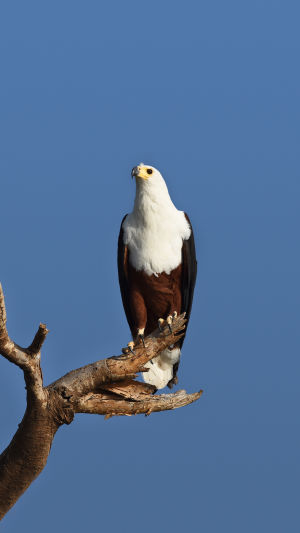The Bald Eagle, known scientifically as Haliaeetus leucocephalus, is a powerful symbol of North America. Revered as the national bird of the United States, this magnificent raptor is a true marvel of nature.
This article will take you through the remarkable features of the Bald Eagle, its habitat, lifestyle, and conservation journey. By understanding its majesty and role in both the wild and human culture, we gain a deeper appreciation for this iconic bird.
Bald Eagle (Haliaeetus leucocephalus)
video by Birds In Motion
<h3>Physical Features: Strength and Beauty Combined</h3>
One of the most striking characteristics of the Bald Eagle is its size. Measuring between 70 and 102 cm in length and boasting a wingspan of 1.8 to 2.3 meters, this bird is not only large but also imposing. Weighing between 3 to 6.3 kg, the female Bald Eagle is about 25% larger than its male counterpart. The adults sport a beautiful contrast of dark brown bodies with striking white heads and tails. Their bright yellow beaks and feet stand out, and their sharp talons give them the strength needed to grasp prey. Their flight skills are exceptional, allowing them to soar over vast landscapes with ease.
<h3>Habitat: The Open Water's King</h3>
Bald Eagles are most commonly found in areas with abundant open water. This includes lakes, rivers, and coastal habitats where they can hunt for fish, their primary diet. However, they are opportunistic feeders and will also consume other animals when necessary, such as small mammals, birds, and even scavenged food. The Bald Eagle’s adaptability to its environment is one reason it has thrived across such a vast range.
These birds prefer to nest in large, old trees near water bodies, often avoiding human disturbance. Their nests are massive and can be located high above the ground, providing a safe space for raising their young. A pair of Bald Eagles typically return to the same nesting site year after year. They have a monogamous breeding system, forming lifelong partnerships.
<h3>Life Cycle: Growth and Reproduction</h3>
Bald Eagles reach reproductive maturity at 4 to 5 years of age, at which point they begin the breeding process. They usually lay 1 to 3 eggs annually, and these eggs take around 8 to 14 weeks to hatch. Once hatched, the eaglets remain in the nest until they are strong enough to leave. Wild Bald Eagles can live up to 20 years, though many face significant challenges in their early years. Their early development, from hatching to fledging, is an essential period in their life cycle.
<h3>Conservation Journey: From Decline to Recovery</h3>
The Bald Eagle population faced a dramatic decline during the 20th century. Due to pesticide use and hunting, their numbers plummeted, and by the mid-1900s, they were nearly extinct in many parts of the U.S. However, thanks to significant conservation efforts, including legal protections, habitat restoration, and banning harmful chemicals like DDT, the Bald Eagle population began to recover.
By 2004, the International Union for Conservation of Nature (IUCN) classified the Bald Eagle as a species of "Least Concern," a major success in wildlife conservation. Today, their population is stable, and they are no longer at risk of extinction. This is a testament to the power of conservation efforts in reversing the damage caused by human activity.
<h3>A Symbol of Hope and Power</h3>
The Bald Eagle’s journey from near extinction to becoming a symbol of strength and freedom is truly inspiring. It serves as a reminder of the resilience of nature and the importance of protecting endangered species. Through continued conservation efforts, we can ensure that future generations will experience the same awe-inspiring presence of this incredible bird.
For those who seek to witness this magnificent creature, be sure to visit areas with abundant waterways where Bald Eagles can often be spotted soaring through the skies. Let's continue to admire and protect this majestic bird for years to come.
Stay inspired, Lykkers! Keep embracing the beauty of nature.





